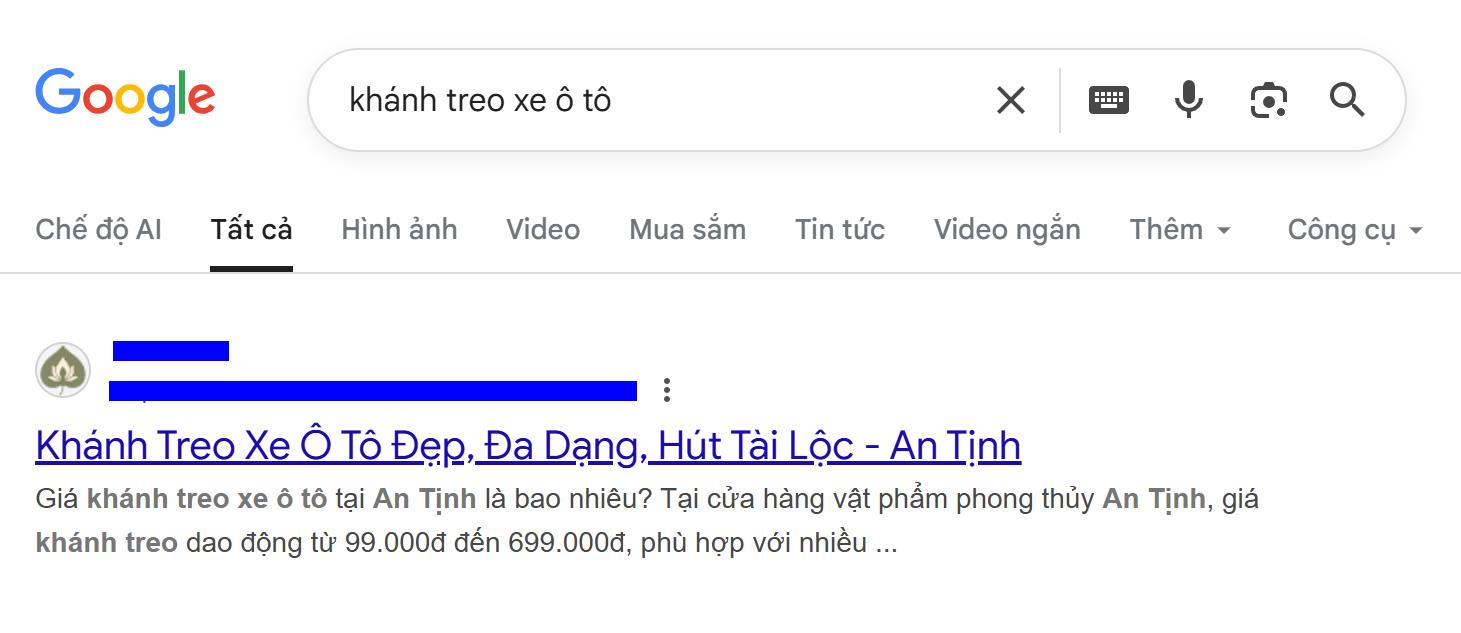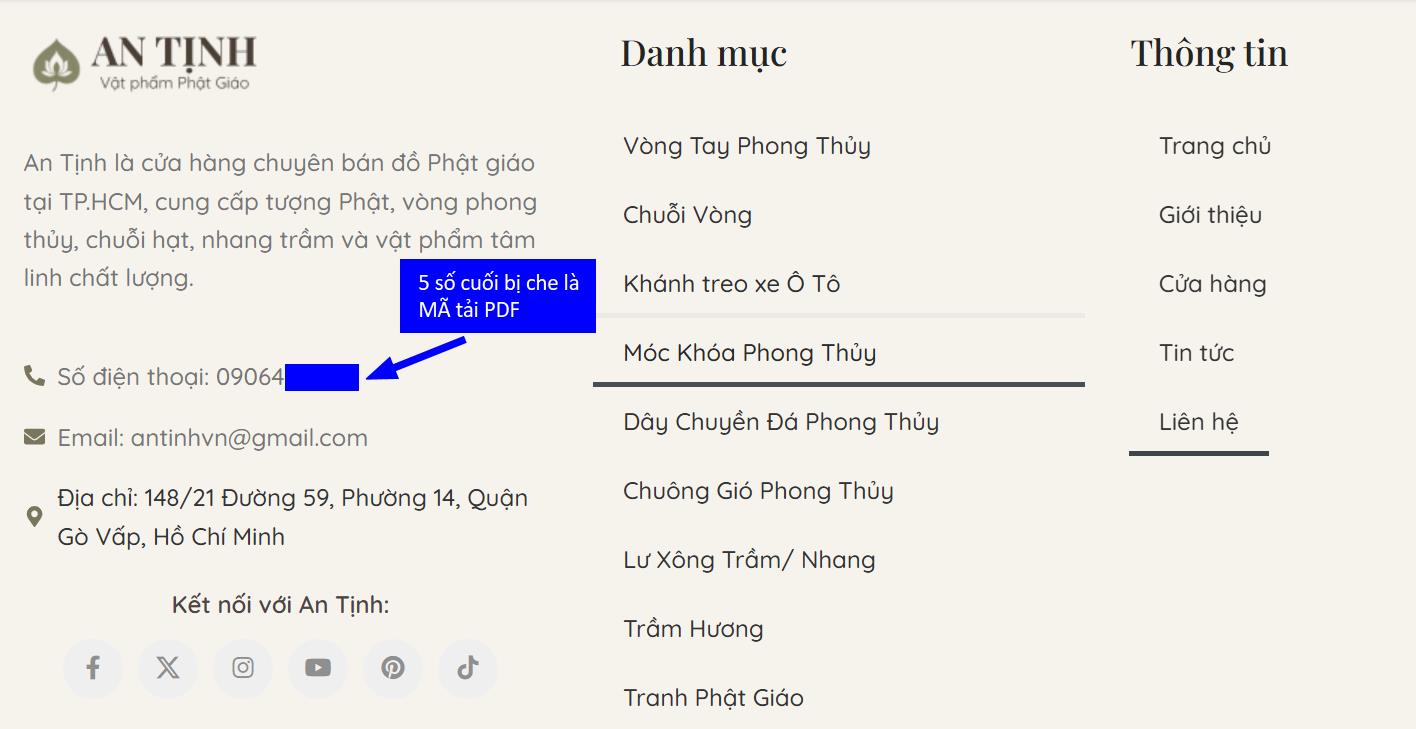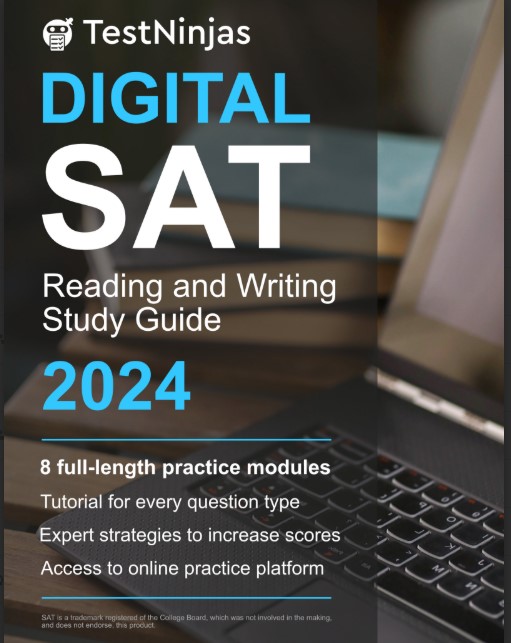
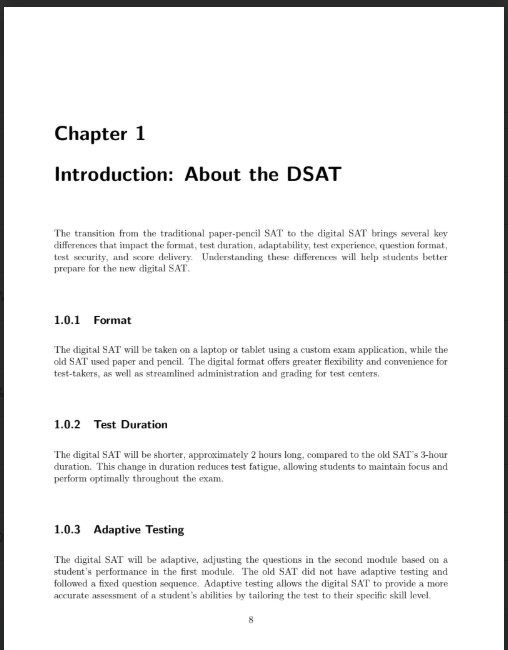
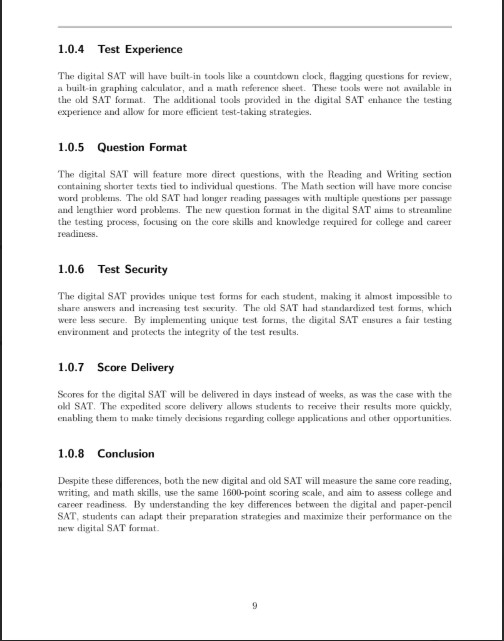
Contents
I Introduction ………………………………………………………………………….. 7
1 Introduction: About the DSAT ……………………………………………… 8
1.0.1 Format ………………………………………………………………………….. 8
1.0.2 Test Duration ………………………………………………………………….. 8
1.0.3 Adaptive Testing ……………………………………………………………… 8
1.0.4 Test Experience ………………………………………………………………. 9
1.0.5 Question Format ………………………………………………………………. 9
1.0.6 Test Security …………………………………………………………………… 9
1.0.7 Score Delivery …………………………………………………………………. 9
1.0.8 Conclusion …………………………………………………………………….. 9
2 Reading Question Types ……………………………………………………… 10
2.1 Introduction …………………………………………………………………….. 10
2.1.1 Domain: Craft and Structure …………………………………………… 10
2.1.2 Domain: Information and Ideas ……………………………………… 11
2.1.3 Domain: Standard English Conventions …………………………… 11
2.1.4 Domain: Expression of Ideas …………………………………………… 11
3 Scoring 1600 …………………………………………………………………….. 13
3.1 The Ultimate Guide to Scoring 1600 on the SAT: Strategies and Tips ………………… 13
3.1.1 Building a Solid Foundation ………………………………………….. 13
3.1.2 Developing a Customized Study Plan ……………………………… 14
3.1.3 If you scored 1550 ……………………………………………………….. 15
3.2 Mastering Time Management Skills for SAT Success ……………………………………. 15
3.3 Tools for Time Management ………………………………………………………………… 15
3.3.1 Using a Computer ………………………………………………………… 15
3.3.2 Time Tracking Software ………………………………………………….. 16
3.4 Strategies for Time Management ………………………………………………………….. 16
3.4.1 The Skip and Return Strategy ………………………………………… 16
3.4.2 The Section Division Strategy …………………………………………. 16
3.5 Practicing Time Management ……………………………………………………………….. 16
3.5.1 Mock Tests …………………………………………………………………… 16
3.5.2 Gradual Time Reduction ………………………………………………… 16
3.5.3 Anxiety Management …………………………………………………….. 16
3.6 Non-Traditional Methods for Test Preparation ………………………………………… 17
3.6.1 Mind Mapping ………………………………………………………………. 17
3.6.2 Dual Coding …………………………………………………………………. 17
3.6.3 Interleaved Practice ………………………………………………………. 17
3.6.4 Test-Taking Tips …………………………………………………………… 18
3.6.5 Test day preparation ……………………………………………………. 18
3.7 Building Mental Resilience ………………………………………………………………….. 19
3.8 Mindfulness Meditation …………………………………………………………………….. 19
3.9 Visualization ……………………………………………………………………………………. 19
3.10 Mastering the Art of Educated Guessing in Multiple-Choice Questions ……… 20
3.10.1 The Process of Elimination …………………………………………….. 20
3.10.2 Beware of Absolute Terms ……………………………………………… 21
3.10.3 Choose the Longest or Most Detailed Answer …………………. 21
3.10.4 Trust Your First Instinct ………………………………………………… 21
3.10.5 When All Else Fails, Guess ……………………………………………. 22
3.11 Positive Affirmations ………………………………………………………………………. 22
3.12 Harnessing the Power of Positive Affirmations for Test Taking …………………. 22
3.12.1 Understanding Positive Affirmations ………………………………. 22
3.12.2 The Role of Positive Affirmations in Test Preparation …….. 22
3.12.3 Incorporating Positive Affirmations into Test Preparation … 22
3.13 Conclusion …………………………………………………………………………………….. 23
II “How to Solve” Tutorials …………………………………………………….. 24
4 How to Solve “Craft and Structure – Word In Context” ……….. 25
4.1 Example “Craft and Structure – Word In Context” Question ….. 25
4.2 How to solve “Craft and Structure – Word In Context” ………… 26
5 How to Solve “Craft and Structure – Text Structure and Purpose” ………………………………………………………………………………………….. 29
5.1 Example “Craft and Structure – Text Structure and Purpose” Question ……………………………………………………………………………….. 29
5.2 How to solve “Craft and Structure – Text Structure and Purpose” ……………………………………………………………………………….. 30
6 How to Solve “Craft and Structure – Cross-Text Connections” … 34
6.1 Example “Craft and Structure – Cross-Text Connections” Question ……………………………………………………………………………….. 34
6.2 How to solve “Craft and Structure – Cross-Text Connections” ……………………………………………………………………………….. 35
7 How to Solve “Information and Ideas – Central Ideas and Details” ………………………………………………………………………………………….. 39
7.1 Example “Information and Ideas – Cross-Text Connections” Question ……………………………………………………………………………….. 39
7.2 How to solve “Information and Ideas – Central Ideas and Details” ……………………………………………………………………………….. 40
8 How to Solve “Information and Ideas – Command of Evidence” .. 44
8.1 Example “Information and Ideas – Command of Evidence” Question ……………………………………………………………………………….. 44
8.2 How to solve “Information and Ideas – Command of Evidence” ……………………………………………………………………………….. 45
9 How to Solve “Information and Ideas – Inferences” ………………. 49
9.1 Example “Inferences” Question …………………………………………… 49
9.2 How to solve “Information and Ideas – Inferences” ………………. 50
10 How to Solve “Standard English Conventions – Boundaries” ….. 54
10.1 Example “Standard English Conventions – Boundaries” Question … 54
10.2 How to solve “Standard English Conventions – Boundaries” ……. 55
11 How to Solve “Standard English Conventions – Form Structure, and Sense” ………………………………………………………………………………. 59
11.1 Example “Standard English Conventions – Form, Structure, and Sense” Question ………………………………………………………………………. 59
11.2 How to solve “Standard English Conventions – Form, Structure, and Sense” ………………………………………………………………………. 60
12 How to Solve “Expression of Ideas – Rhetorical Synthesis” ….. 62
12.1 Example “Expression of Ideas – Rhetorical Synthesis” Question …. 63
12.2 How to solve “Expression of Ideas – Rhetorical Synthesis” …….. 64
13 How to Solve “Expression of Ideas – Transitions” …………………. 68
13.1 Example “Expression of Ideas – Transitions” Question ………….. 68
13.2 How to solve “Expression of Ideas – Transition” …………………. 69
13.2.1 Additional Transition Word List ………………………………….. 72
Chapter 1
Introduction: About the DSAT
The transition from the traditional paper-pencil SAT to the digital SAT brings several key differences that impact the format, test duration, adaptability, test experience, question format, test security, and score delivery. Understanding these differences will help students better prepare for the new digital SAT.
1.0.1 Format
The digital SAT will be taken on a laptop or tablet using a custom exam application, while the old SAT used paper and pencil. The digital format offers greater flexibility and convenience for test-takers, as well as streamlined administration and grading for test centers.
1.0.2 Test Duration
The digital SAT will be shorter, approximately 2 hours long, compared to the old SAT’s 3-hour duration. This change in duration reduces test fatigue, allowing students to maintain focus and perform optimally throughout the exam.
1.0.3 Adaptive Testing
The digital SAT will be adaptive, adjusting the questions in the second module based on a student’s performance in the first module. The old SAT did not have adaptive testing and followed a fixed question sequence. Adaptive testing allows the digital SAT to provide a more accurate assessment of a student’s abilities by tailoring the test to their specific skill level.
1.0.4 Test Experience
The digital SAT will have built-in tools like a countdown clock, flagging questions for review,
a built-in graphing calculator, and a math reference sheet. These tools were not available in
the old SAT format. The additional tools provided in the digital SAT enhance the testing
experience and allow for more efficient test-taking strategies.
1.0.5 Question Format
The digital SAT will feature more direct questions, with the Reading and Writing section
containing shorter texts tied to individual questions. The Math section will have more concise
word problems. The old SAT had longer reading passages with multiple questions per passage
and lengthier word problems. The new question format in the digital SAT aims to streamline
the testing process, focusing on the core skills and knowledge required for college and career
readiness.
1.0.6 Test Security
The digital SAT provides unique test forms for each student, making it almost impossible to
share answers and increasing test security. The old SAT had standardized test forms, which
were less secure. By implementing unique test forms, the digital SAT ensures a fair testing
environment and protects the integrity of the test results.
1.0.7 Score Delivery
Scores for the digital SAT will be delivered in days instead of weeks, as was the case with the
old SAT. The expedited score delivery allows students to receive their results more quickly,
enabling them to make timely decisions regarding college applications and other opportunities.
1.0.8 Conclusion
Despite these differences, both the new digital and old SAT will measure the same core reading,
writing, and math skills, use the same 1600-point scoring scale, and aim to assess college and
career readiness. By understanding the key differences between the digital and paper-pencil
SAT, students can adapt their preparation strategies and maximize their performance on the
new digital SAT format.
Chapter 2
Reading Question Types
2.1 Introduction
The SAT Reading section is designed to assess a student’s comprehension, vocabulary, analy-
sis, synthesis, and reasoning skills across various domains. The test focuses on four primary
domains: Craft and Structure, Information and Ideas, Standard English Conventions, and Ex-
pression of Ideas. Within these domains, ten specific skill areas are evaluated. A thorough
understanding of these domains and skills will help you develop effective strategies for tackling
the SAT Reading section. In this chapter, we will provide an in-depth introduction to each
domain and their associated question types.
2.1.1 Domain: Craft and Structure
The Craft and Structure domain evaluates a student’s ability to understand and use high-utility
words and phrases, assess texts rhetorically, and establish connections between related texts.
There are three primary question types associated with this domain:
- Words in Context: These questions require students to determine the meaning of high-
utility academic words or phrases in context or to use them precisely and contextually
appropriate. To excel at these questions, students should expand their vocabulary and
develop skills for understanding words in context.
- Text Structure and Purpose: In this question type, students must analyze the struc-
ture of a text or determine its main rhetorical purpose. Developing a deep understanding
of various text structures and rhetorical purposes will enable students to approach these
questions effectively.
- Cross-Text Connections: These questions assess a student’s ability to draw reasonable
connections between two topically related texts. To perform well on these questions,
students should practice identifying thematic and structural similarities between different
texts.
10
2.1.2 Domain: Information and Ideas
The Information and Ideas domain measures a student’s comprehension, analysis, and reasoning
skills, as well as their ability to locate, interpret, evaluate, and integrate information and ideas
from texts and informational graphics. This domain features three main question types:
- Central Ideas and Details: In these questions, students are required to determine the
central idea of a text and/or interpret the key details supporting that idea. To excel at
these questions, students should practice identifying central ideas and relevant details in
a variety of texts. - Command of Evidence: These questions challenge students to use textual or quantita-
tive evidence to support, challenge, or respond to a specified claim or point. To succeed
in this question type, students must develop skills for finding and interpreting relevant
evidence within a text.
- Inferences: These questions assess a student’s ability to draw reasonable inferences
based on explicit and/or implicit information and ideas in a text. To perform well on
these questions, students should practice making logical inferences from various texts.
2.1.3 Domain: Standard English Conventions
The Standard English Conventions domain measures a student’s ability to edit texts to conform
to core conventions of Standard English sentence structure, usage, and punctuation. There are
two primary question types associated with this domain:
- Boundaries: These questions require students to edit text to ensure that sentences
are conventionally complete. To excel at these questions, students should familiarize
themselves with the rules of Standard English sentence structure. - Form, Structure, and Sense: In this question type, students must edit text to conform
to conventional usage, such as agreement and verb tense/aspect. Developing a thorough
understanding of the rules governing Standard English usage will enable students to ap-
proach these questions effectively.
2.1.4 Domain: Expression of Ideas
The Expression of Ideas domain measures a student’s ability to revise texts to improve
the effectiveness of written expression and to meet specific rhetorical goals. This domain
features two main question types:
11
- Rhetorical Synthesis: These questions challenge students to strategically integrate
provided information and ideas on a topic to form an effective sentence achieving a spec-
ified rhetorical aim. To excel at these questions, students should practice synthesizing
information from various sources to create coherent and persuasive sentences.
- Transitions: In this question type, students must determine the most effective transition
word or phrase to logically connect information and ideas in a text. Developing a deep
understanding of various transition words and phrases and their appropriate usage will
enable students to approach these questions effectively.
In conclusion, a thorough understanding of the four primary domains and their associated
question types is essential for success in the SAT Reading section. By familiarizing yourself
with these domains and question types, you can develop targeted strategies to improve your
performance and increase your overall score.

